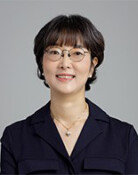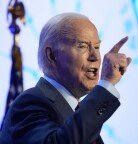Young entrepreneurs' social contribution
Young entrepreneurs' social contribution
Posted January. 12, 2018 08:07,
Updated January. 12, 2018 08:26
A play titled “Look Back in Anger” written by British playwright John Osborne premiered on a stage of London in 1956. The play was about the agony of those in their 20s or 30s who lost hope. The young people who were against the irrational reality after World War II went wildly excited about it. It was especially noticeable in literature, and “angry young men” who agree to it were born.
Damien Hirst, a British artist, formed Young British Artists (YBA) when he was attending college, and held his first individual exhibition in 1991 under the title “The Physical Impossibility of Death in the Mind of Someone Living.” The artwork was created by hanging a dead shark inside a glass showcase filled with formaldehyde, and it was connected to a motor to make it move. Hirst shocked the world of art and rose as the leader of YBA, and now has become one of the most “expensive” artists in the world.
Young Friends for the Museum (YFM) of the National Museum of Korea purchased Goryeo’s portable Buddhist shrine that was outflowed to Japan and donated it to the National Museum of Art on Tuesday. YFM is a group of young businesspeople aged 50 and younger among 3,000 members of Friends of the National Museum of Korea who sponsor the museum. It was formed in 2008 under the lead of Chung Yong-jin, vice chairman of Shinsegae, and Hong Jung-wook, chairman of Herald Corporation. About 90 people, including Nam Soo-jeong, CEO of Sun at Food, Park Jin-won, vice chairman of Neoplux, Park Seon-jeong, CEO of GLMI, and Heo Yong-soo, CEO of GS EPS, are participating in it. These people also paid a part of the cost when retrieving a mother-of-pearl inlaid lacquered woodenware from the Goryeo Dynasty in 2014.
The term “young men” was introduced to Korea back in 1903, when Young Men’s Christian Association (YMCA) was introduced into Korea. Back then, “young men” dedicated themselves to bringing modern minds and movements for civil rights and agriculture, and provided baseball in 1905. They also dedicated themselves to a pro-democracy movement during the military dictatorship from the 1970s to the 1980s. The image of “young men” has changed depending on time, but the first image that comes to one’s mind is angry face. Young Friends for the Museum has shown the new sides of the young men, however. It is noteworthy that the social contribution of young entrepreneurs has become more mature in the arts and culture sector.
Kwang-Pyo Lee kplee@donga.com







